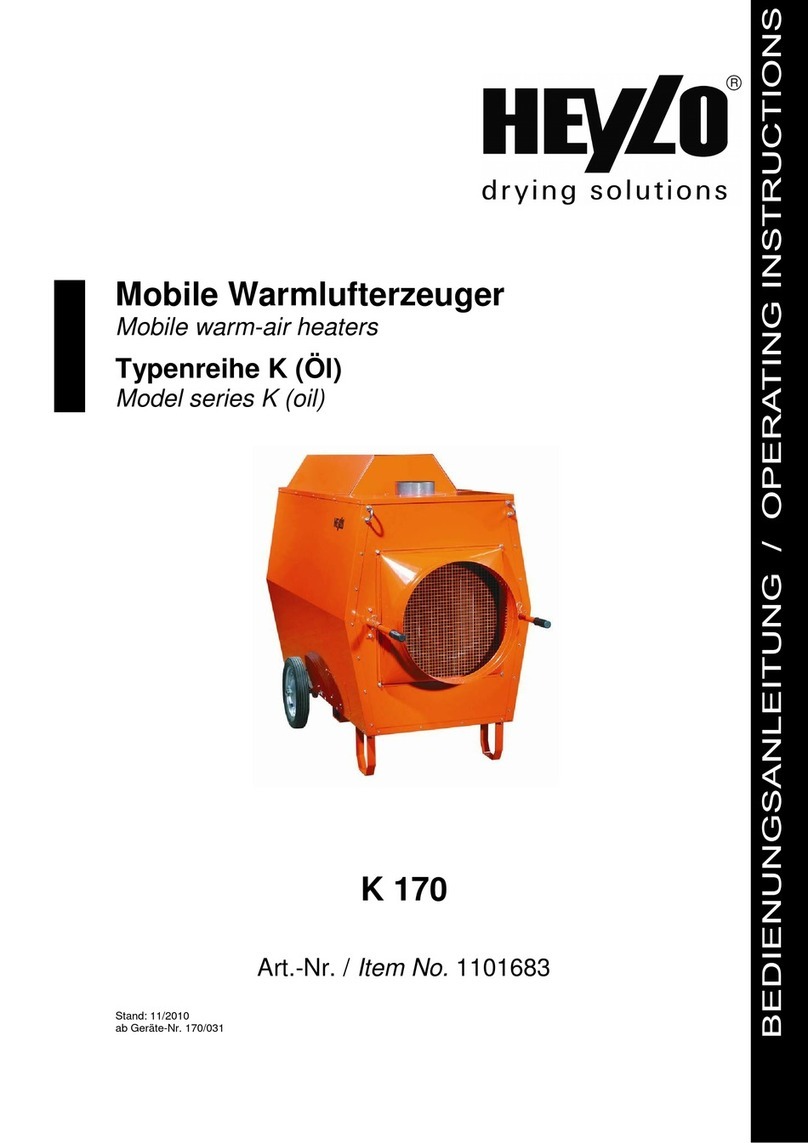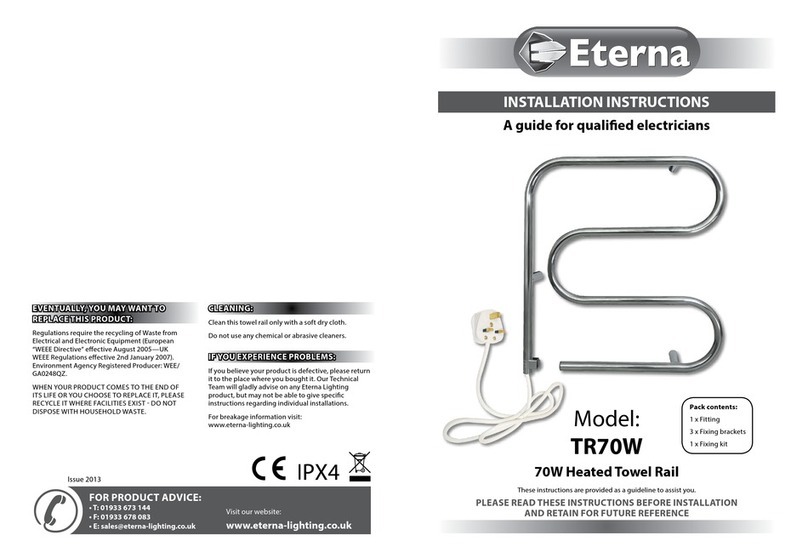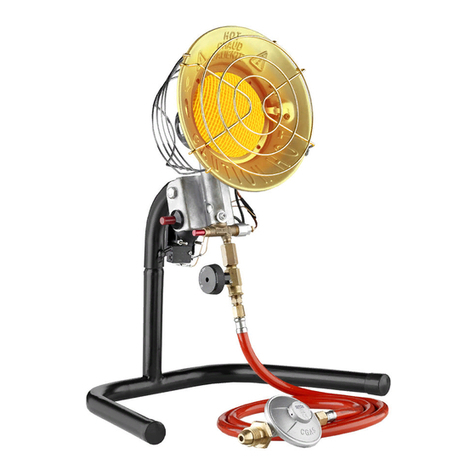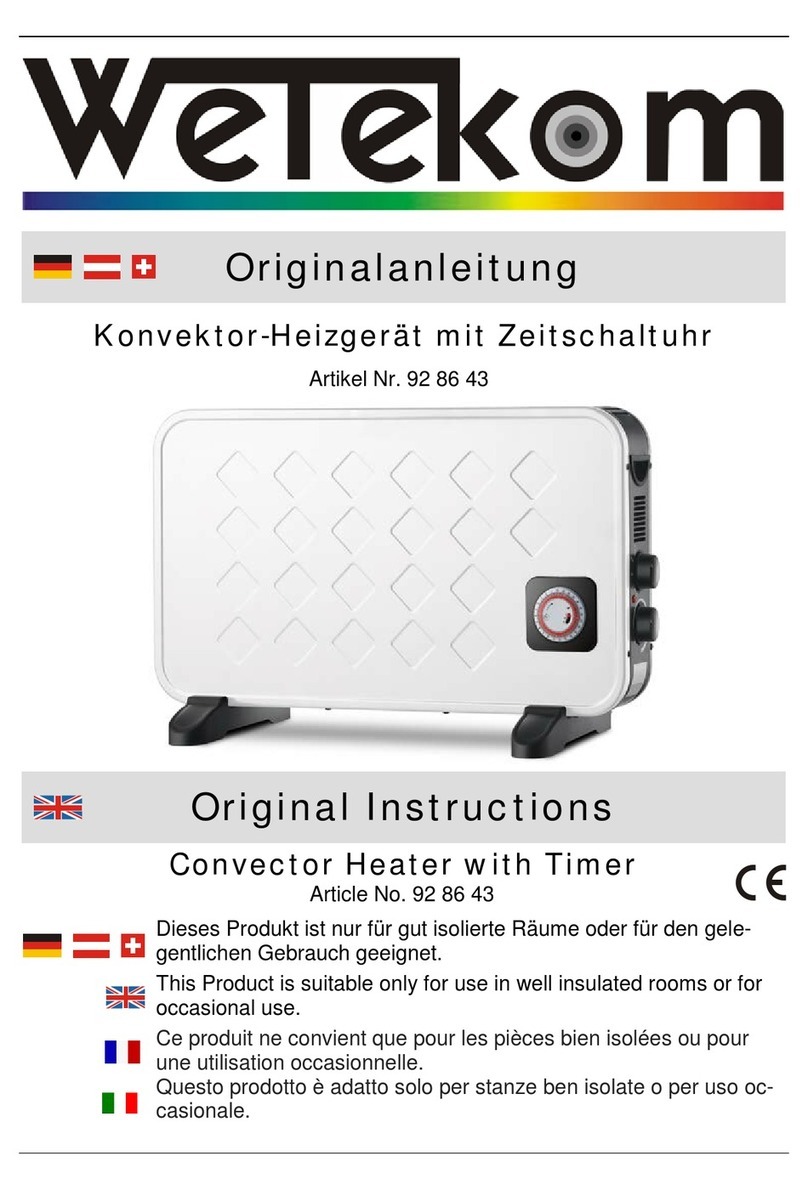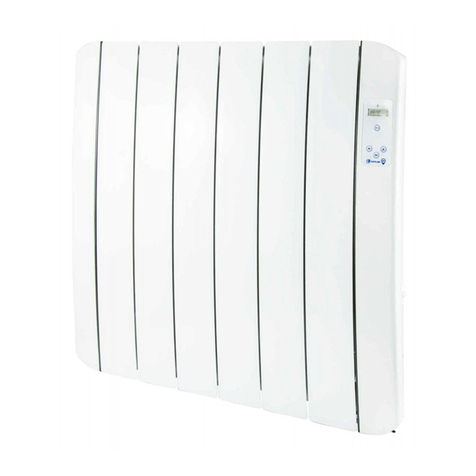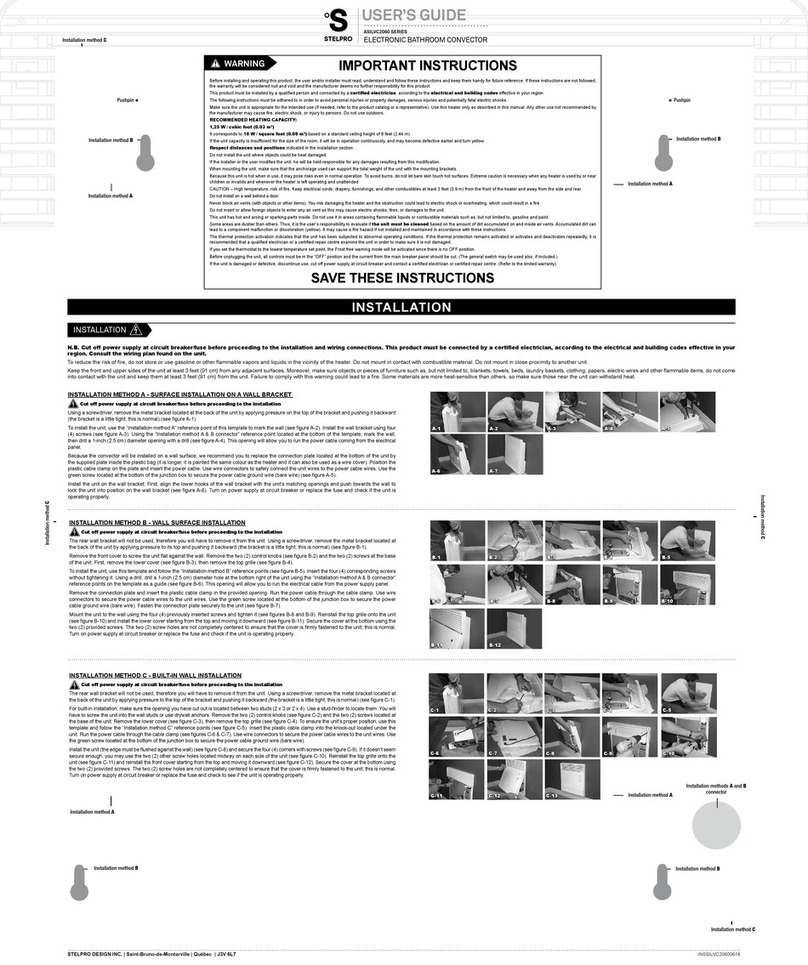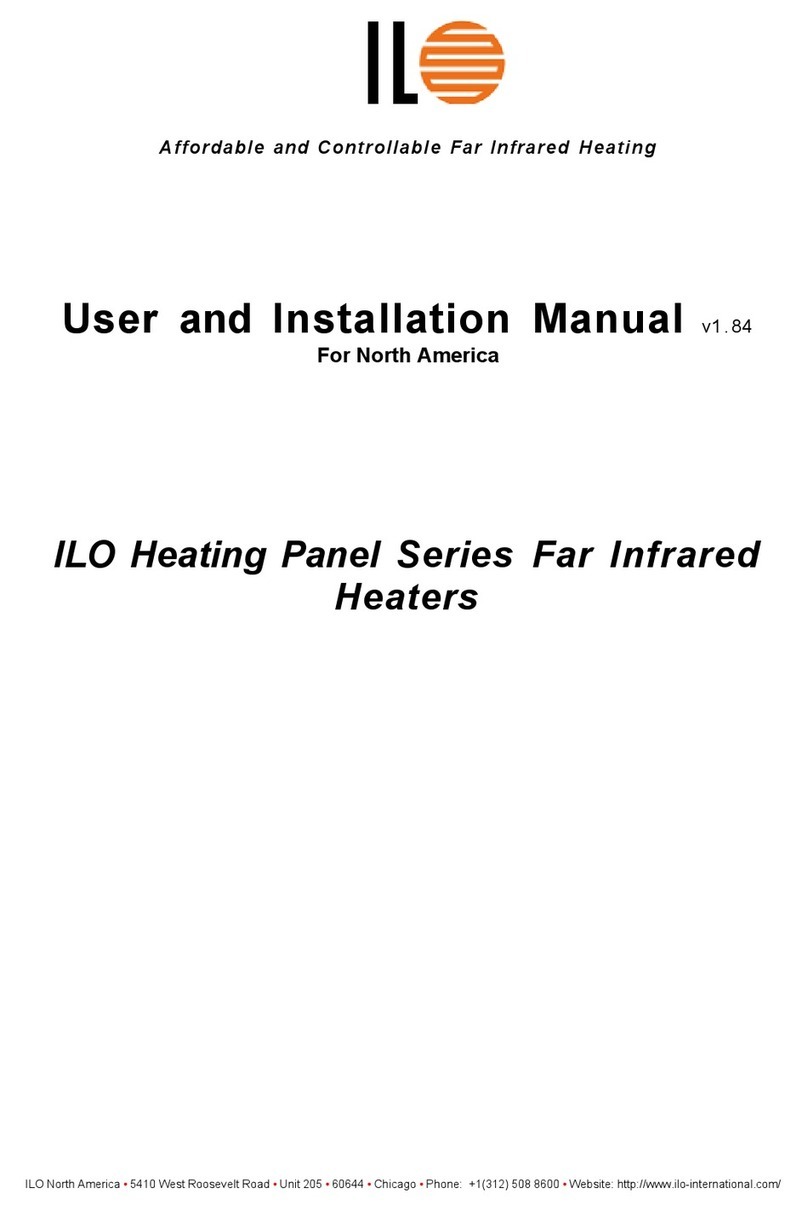
5
1. Safety Instructions
WARNING!= potential risk of serious personal injury
CAUTION! = danger of damaging the heater or work piece
WARNING!
Do not use the induction heater if supply cord is damaged. The cord must be replaced by the
manufacturer, its agent or similarly qualified persons.
Induction heaters generate a magnetic induction field, which may affect or impair medical devices
such as pacemakers or hearing aids, resulting in a high risk of serious bodily harm. Do not
operate, or be within a suggested minimum distance of 5m (16ft) of the machine while wearing
such devices.
Hot work pieces may burn. Use protective gloves when handling such work pieces. The supplied
gloves are suitable for maximum temperature of 150ºC (302ºF).
Do not operate an Induction heater in areas where there is a risk of an explosion.
Proper maintenance and handling practices are critical. Failure to follow the user manual can
result in equipment failure, creating a risk of serious bodily harm.
Safety precautions
The user should have an appreciation of the contents of this manual, and be familiar with safe
workshop practices.
Follow the User Manual at all times.
Ensure that the machine operates at the correct supply voltage. If the heater has been supplied
without a plug, the connection to a power supply should only be made by a suitably qualified
person.
Do not use or store the heater in humid environments. Bega Induction heaters are designed for
indoor use only.
On mobile models, always apply the brake when in a stationary position.
If the heater is equipped with sliding horizontal supports, always secure these with the designated
safety pin, either in the “in” or “out” position.
Use proper handling equipment, appropriate for the weight of the work piece or yoke.
Never support parts with a metal cable or have anything metallic hanging in the proximity of the
magnetic field. Extremely high currents can flow through the cable, causing the cable to heat up.
Do not hold metal objects near the yokes and poles.
While heating keep at least 1 metre (3,3ft) distance from the heater.
Never remove the yokes during the heating cycle.
Do not modify the heater and do not use self-fabricated yokes.
Always check that the yoke is correctly adjusted to the poles otherwise excessive vibration may
occur.
Only switch the machine on when the yoke is positioned correctly – on models equipped with a
swing arm (or swivelling yoke), the arm should always be closed.
Note: Since our products are subject to continuous improvement, we reserve the right to make
changes.








